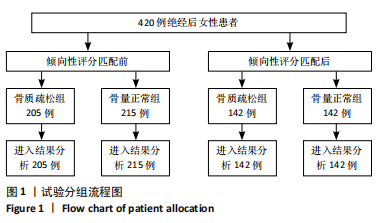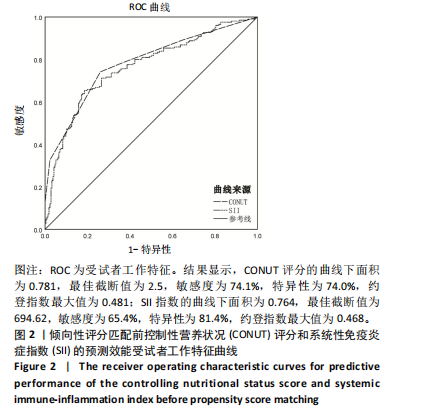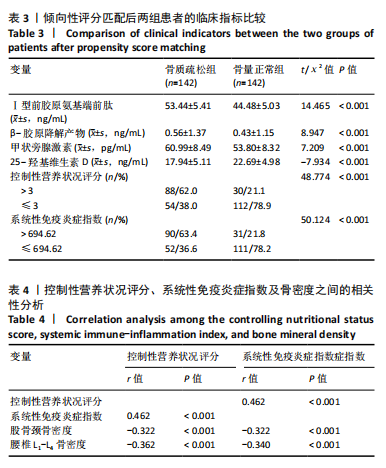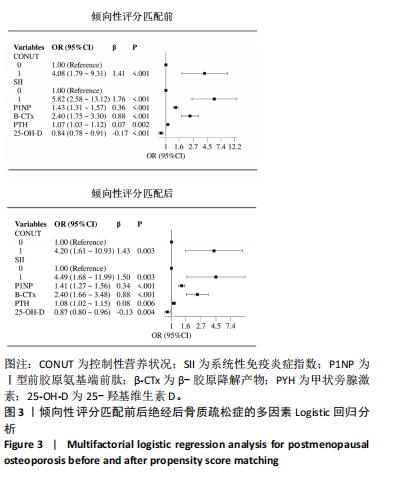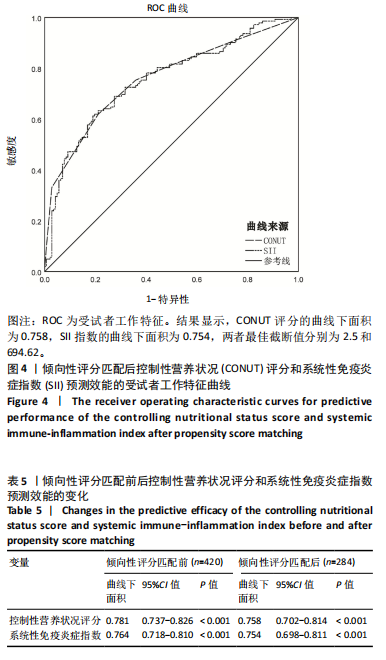[1] 中华医学会骨质疏松和骨矿盐疾病分会,章振林.原发性骨质疏松症诊疗指南(2022)[J].中国全科医学,2023,26(14):1671-1691.
[2] ZHU Z, YU P, WU Y, et al. Sex specific global burden of osteoporosis in 204 countries and territories, from 1990 to 2030: an age-period-cohort modeling study. J Nutr Health Aging. 2023;27(9):767-774.
[3] SHANGGUAN X, XIONG J, SHI S, et al. Impact of the malnutrition on mortality in patients with osteoporosis: a cohort study from NHANES 2005-2010. Front Nutr. 2022;9:868166.
[4] TABATABAI LS, SELLMEYER DE. Nutritional supplements and skeletal health. Curr Osteoporos Rep. 2021;19:23-33.
[5] ALABADI B, CIVERA M, MORENO-ERRASQUIN B, et al. Nutrition-Based Support for Osteoporosis in Postmenopausal Women: A Review of Recent Evidence. Int J Womens Health. 2024;16:693-705.
[6] JIANG N, AN J, YANG K, et al. NLRP3 inflammasome: a new target for prevention and control of osteoporosis? Front Endocrinol (Lausanne). 2021;12:752546.
[7] FISCHER V, HAFFNER-LUNTZER M. Interaction between bone and immune cells: Implications for postmenopausal osteoporosis. Semin Cell Dev Biol. 2022;123:14-21.
[8] DE ULíBARRI JI, GONZÁLEZ-MADROÑO A, DE VILLAR NG, et al. CONUT: a tool for controlling nutritional status. First validation in a hospital population. Nutr Hosp. 2005;20(1):38-45.
[9] 杨珍珍,赵晶,彭瑜,等.CONUT评分与急性心肌梗死患者死亡的相关性研究[J].中国循环杂志,2018,33(10):978-983.
[10] 冶学燕,仝雪薇,邓朝晖,等.2型糖尿病住院患者营养状况评估及影响因素分析[J].国际检验医学杂志,2020,41(11):1310-1313.
[11] 何海艳,刘右萍,张睿,等.控制营养状态评分和相关指标在骨肉瘤患者预后预测中的价值[J].肿瘤代谢与营养电子杂志,2023, 10(6):813-819.
[12] 任莎莎,简文,刘自明.系统免疫炎症指数和骨骼肌质量指数与肝硬化合并肝癌患者术后预后的关系[J].现代肿瘤医学,2020, 28(10):1693-1697.
[13] 彭江南,王昊晨,张亮,等.老年髋部骨折后静脉血栓栓塞症风险预测模型的构建及预测效能[J].中南大学学报(医学版),2021, 46(2):142-148.
[14] 阮汉江,李新武,武鹏,等.系统免疫炎症指数在强直性脊柱炎中的预测价值研究[J].中国免疫学杂志,2022,38(4):457-461.
[15] JEONG TD, LEE W, CHOI SE, et al. Relationship between Serum Total Cholesterol Level and Serum Biochemical Bone Turnover Markers in Healthy Pre-and Postmenopausal Women. Biomed Res Int. 2014; 2014(1):398397.
[16] 张晓,钱志远,顾柏林,等.骨密度与血清白蛋白、钙、镁、磷及血红蛋白的相关性研究[J].中国骨质疏松杂志,2015,21(3):292-297.
[17] NAGAYAMA Y, EBINA K, TSUBOI H, et al. Low serum albumin concentration is associated with increased risk of osteoporosis in postmenopausal patients with rheumatoid arthritis. J Orthop Sci. 2022;27(6):1283-1290.
[18] DE VRIES TJ, EL BAKKALI I, KAMRADT T, et al. What are the peripheral blood determinants for increased osteoclast formation in the various inflammatory diseases associated with bone loss? Front Immunol. 2019;10:505.
[19] FRASE D, LEE C, NACHIAPPAN C, et al. The inflammatory contribution of B-lymphocytes and neutrophils in progression to osteoporosis.Cells. 2023;12(13):1744.
[20] KANE LT, FANG T, GALETTA MS, et al. Propensity score matching: a statistical method. Clin Spine Surg. 2020;33(3):120-122.
[21] 万雷,黄宏兴,邓伟民,等.广东省中老年女性骨质疏松症患者骨密度、中医证型及其影响因素调查分析[J].中国骨质疏松杂志,2019, 25(1):107-112.
[22] 黄晓,王亚平.影响中老年女性原发性骨质疏松症的危险因素调查[J].中国妇幼保健,2021,36(5):1145-1147.
[23] 刘丹,陈小妃,刘海棠.基于倾向性评分匹配分析老年营养风险指数与老年重症患者并发谵妄的相关性[J].中国急救医学,2024, 44(5):408-414.
[24] DALMIGLIO C, BRILLI L, CAMPANILE M, et al. CONUT score: a new tool for predicting prognosis in patients with advanced thyroid cancer treated with TKI. Cancers (Basel). 2022;14(3):724.
[25] ZANKER J, DUQUE G. Osteoporosis in older persons: old and new players. J Am Geriatr Soc. 2019;67(4):831-840.
[26] BARNSLEY J, BUCKLAND G, CHAN P, et al. Pathophysiology and treatment of osteoporosis: challenges for clinical practice in older people. Aging Clin Exp Res. 2021;33:759-773.
[27] RIZZOLI R, BIVER E, BRENNAN-SPERANZA TC. Nutritional intake and bone health. Lancet Diabetes Endocrinol. 2021;9(9):606-621.
[28] MOILANEN A, KOPRA J, KRöGER H, et al. Characteristics of long-term femoral neck bone loss in postmenopausal women: A 25-year follow-up. J Bone Miner Res. 2020;37(2):173-178.
[29] HO-PHAM LT, NGUYEN HG, NGUYEN-PHAM SQ, et al. Longitudinal changes in bone mineral density during perimenopausal transition: the Vietnam Osteoporosis Study. Osteoporos Int. 2023;34(8):1381-1387.
[30] YAMAURA T, ARIZUMI F, MARUO K, et al. The Impact of Controlling Nutritional Status (CONUT) score on functional prognosis in hospitalized elderly patients with acute osteoporotic vertebral fractures. BMC Geriatr. 2022;22(1):1002.
[31] FANG H, ZHANG H, WANG Z, et al. Systemic immune-inflammation index acts as a novel diagnostic biomarker for postmenopausal osteoporosis and could predict the risk of osteoporotic fracture. J Clin Lab Anal. 2020;34(1):e23016.
[32] STUMPF F, KELLER B, GRESSIES C, et al. Inflammation and nutrition: friend or foe? Nutrients. 2023;15(5):1159.
[33] VOLKERT D, BECK AM, CEDERHOLM T, et al. ESPEN practical guideline: Clinical nutrition and hydration in geriatrics. Clin Nutr. 2022;41(4):958-989.
[34] 郭曹培,程飘涛,杨成兵,等.骨免疫与骨代谢[J].中国组织工程研究,2024,28(14):2261-2266.
[35] WUNDERLE C, STUMPF F, SCHUETZ P. Inflammation and response to nutrition interventions. JPEN J Parenter Enteral Nutr. 2024;48(1):27-36.
[36] FANG W, WU H, WU Z, et al. A scoring system based on inflammatory and nutritional indicators to predict the long-term survival of patients with non-metastatic nasopharyngeal carcinoma. Sci Rep. 2024;14(1):20229.
[37] LI T, ZENG J, MIAO X, et al. Association between serum albumin with geriatric nutritional risk index and osteopenia in Chinese elderly men: a nested case-control study. Asia Pac J Clin Nutr. 2024;33(4):569-580.
[38] CAO RR, YU XH, XIONG MF, et al. The immune factors have complex causal regulation effects on bone mineral density. Front Immunol. 2022;13:959417.
[39] ZHANG W, GAO R, RONG X, et al. Immunoporosis: Role of immune system in the pathophysiology of different types of osteoporosis. Front Endocrinol (Lausanne). 2022;13:965258.
[40] BAHT GS, VI L, ALMAN BA. The role of the immune cells in fracture healing. Curr Osteoporos Rep. 2018;16:138-145.
[41] TANG Y, PENG B, LIU J, et al. Systemic immune-inflammation index and bone mineral density in postmenopausal women: A cross-sectional study of the national health and nutrition examination survey (NHANES) 2007-2018. Front Immunol. 2022;13:975400.
[42] MA X, TANG L, WANG H, et al. Correlation of serum anti-Mullerian hormone and Inhibin-B levels with osteoporosis of menopausal woman in Chinese Daur ethnic group. J Orthop Surg. 2024;32(1): 10225536241248707.
[43] YOO JI, PARK SY, KIM DY, et al. Effectiveness and Usefulness of Bone Turnover Marker in Osteoporosis Patients: A Multicenter Study in Korea. J Bone Metab. 2023;30(4):311.
[44] PORTALES-CASTILLO I, SIMIC P. PTH, FGF-23, Klotho and Vitamin D as regulators of calcium and phosphorus: Genetics, epigenetics and beyond. Front Endocrinol (Lausanne). 2022;13:992666.
[45] STENHOUSE C, SUVA LJ, GADDY D, et al. Phosphate, calcium, and vitamin D: key regulators of fetal and placental development in mammals. Adv Exp Med Biol. 2022;1354:77-107.
[46] WANG LT, CHEN LR, CHEN KH. Hormone-related and drug-induced osteoporosis: a cellular and molecular overview. Int J Mol Sci. 2023; 24(6):5814.
|
